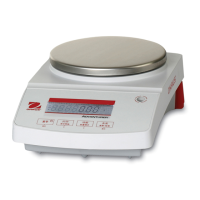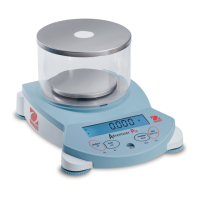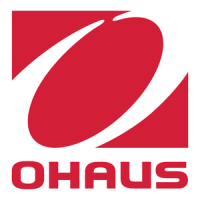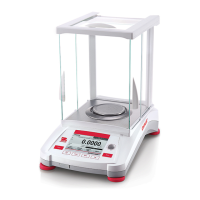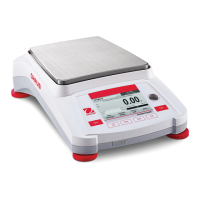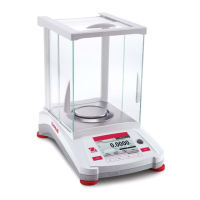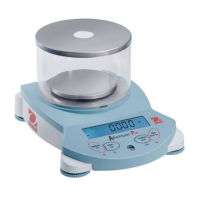What does Error 53 mean on OHAUS Scales?
- RRodney McdonaldSep 8, 2025
If the OHAUS scale displays 'Error 53', it indicates an EEPROM checksum error. Try cycling the power off and on. If the scale still fails to operate, return it for service.
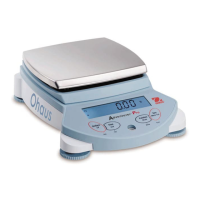
What does Error 53 mean on OHAUS Scales?
If the OHAUS scale displays 'Error 53', it indicates an EEPROM checksum error. Try cycling the power off and on. If the scale still fails to operate, return it for service.
What does REF WT Err mean on OHAUS Scales?
If the OHAUS scale displays 'REF WT Err', the reference weight is too small. The weight on the pan is too small to define a valid reference weight, so you should increase the sample size.
What does LOW REF WT mean on OHAUS Adventurer Pro Grain?
If the OHAUS scale displays 'LOW REF WT', it means the average piece weight is too small. Refer to section 3.6.3 for additional information.
What does Error 9.0 mean on OHAUS Scales?
If your OHAUS scale displays 'Error 9.0', this indicates an internal fault. Return the scale for service.
| Model | Adventurer Pro Grain |
|---|---|
| Readability | 0.1 g |
| Display | LCD with backlight |
| Calibration | External Calibration |
| Repeatability | ± 0.1 g |
| Interface | RS232 |
| Power Supply | AC adapter |
| Weighing Units | g, oz, lb |
| Operating Temperature | 10°C to 40°C (50°F to 104°F) |
| Weight | 2.2 lbs (1 kg) |
| Pan Size | Ø 5.1 in (130 mm) |
Details compliance with UL, CSA, FCC, and ICES standards.
Information on Ohaus's ISO 9001 registration status.
Overview of the Adventurer Pro Grain Test Scale, its capacity, and available features.
Essential safety guidelines for operating the Adventurer Pro Grain Test Scale.
Instructions for safely unpacking and assembling the scale's components prior to use.
Covers selecting location, leveling, connecting power, and initial calibration procedures.
Overview of the scale's physical controls and digital display functions.
Details button operations, including primary, secondary, and menu functions, and common uses.
Explains the menu structure, navigation, and how to change various scale settings.
Covers the Weighing, Test Weight, and Dockage modes, including specific operational details for each.
Step-by-step guide on how to enter, navigate, and change settings within the scale's menus.
Instructions for using the Weighing and Test Weight modes, including density measurement.
Instructions for using the Dockage mode to determine the percentage of waste material in a sample.
How to recall stored dockage reference weights and understand the percent dockage display.
Describes the three calibration methods: Span, Linearity, and Calibration Test.
Detailed procedure for performing a span calibration on the scale.
Instructions for performing linearity calibration, noting its requirement when linearity error exceeds tolerance.
Procedure for performing a calibration test to check stored calibration data against a known mass.
Lists the required calibration masses for different models and calibration types.
Configuration options for Legal Trade, Auto Off, Auto Zero level, and filter settings.
Selection of application modes and enabling/disabling of measurement units.
Guide to defining custom units using conversion factors and least significant digits.
Configuration of printing parameters for external devices, including output, content, and layout.
Configuration of baud rates, parity, and handshake settings for RS232 communication.
Setup for Good Laboratory Practice data, including User ID, Project ID, Time, Date, and print options.
Options to reset scale settings and select GLP items for printing.
Prevents unauthorized changes to menu settings by locking specific submenus.
Procedure to configure the scale for LFT and instructions on how to seal the scale.
Examples of printout formats for Weigh, Test Weight, and Dockage modes.
Examples of printouts for Span, Linearity, and Calibration Test results.
Guidance on verifying calibration and procedures for safe scale cleaning.
A table listing common symptoms, possible causes, and remedies for scale problems.
Troubleshooting specific error codes and information on obtaining service and parts.
Lists available replacement pans and accessories like security devices and cables.
Specifies the ambient conditions and power requirements for the scale.
Details materials used, protection ratings, and overall physical dimensions of the scale.
Lists comprehensive technical specifications including capacity, readability, and display type.
A table showing capacity and readability for different units and modes.
Lists available commands for controlling the scale via RS232 interface and their functions.
Details pin connections for RS232 COM1 and COM2 interfaces, and the USB connection.
Outlines Ohaus's warranty against defects and exclusions.
